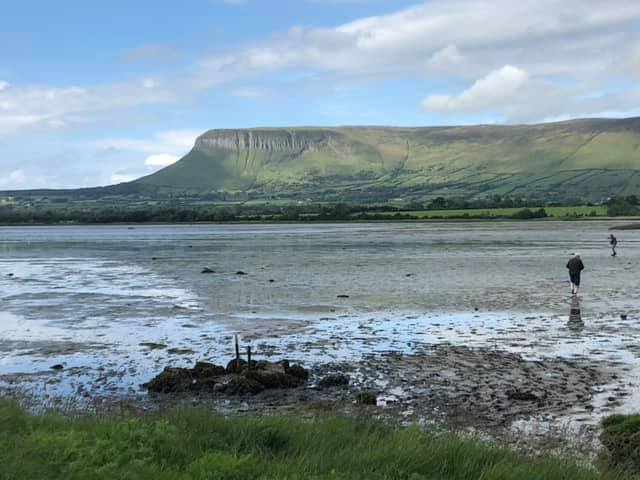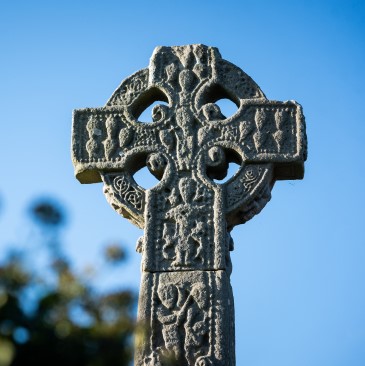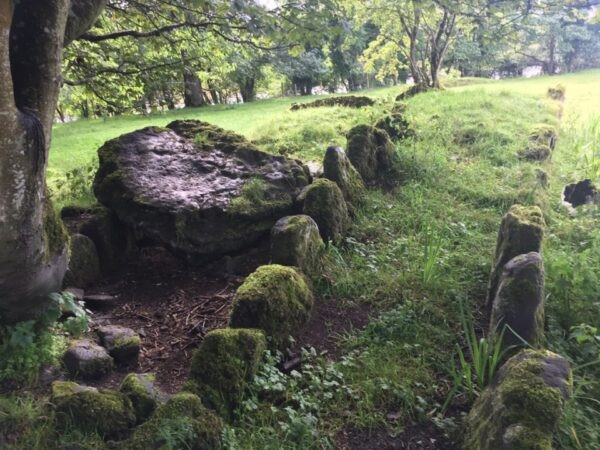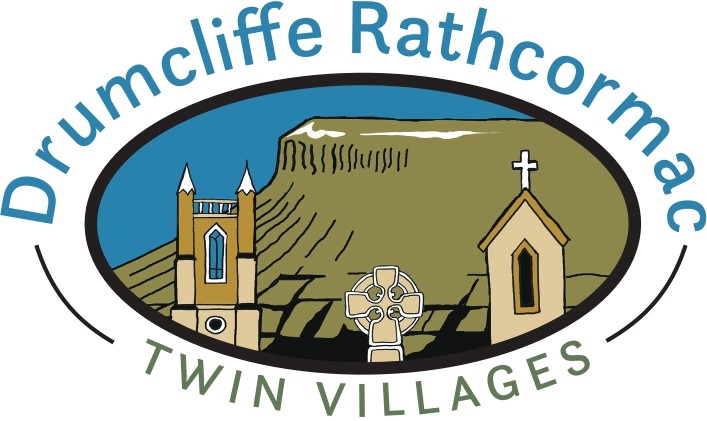In 2008, Archaeologist Faith Bailey identified four possible boulder burial stones were identified on a north-facing slope in Kintogher townland, at the far end of the Branley’s Yard Nature Trail. Possibly dating to the middle to late Bronze Age, boulder burials consist of megalithic size stones set on top of three or four smaller supporting stone and three of the four boulder burials found here are of this nature. Two large standing stones were also identified in this area, the largest approximately 2.2m in height, the smaller 1.2m. Such burial sites are rare in this region and little is known about this particular site, which faces Benbulben mountain on land that, prior to land drainage and reclamation, would originally have formed part of the Drumcliffe Estuary shoreline.
Similar Posts

Drumcliffe Fearsat
A fearsat, ford or strand pass, is a manmade route across a body of water easily passable at low tide. These causeways, also referred to as toghers, were constructed by overlaying branches, bushes, stones, seaweed, and wood to create a raised causeway, or togher. these were in use from ancient times up to the 19th/early 20th…

Drumcliffe High Cross
In ancient times, Drumcliffe was referred to as Druim Cliabh na gcros, or Drumcliff of the crosses, due to the number of high crosses found there. While most were probably made of wood, at least some were stone and one of these remains fully intact at Drumcliffe. The standing undecorated shaft of another high cross…
Rathcormac Japanese Knotweed Project 2012 onwards
A 2009 County Council-commissioned survey of Rathcormac identified four instances of Japanese Knotweed in the village area and further survey work by Tidy Towns volunteers identified seven additional sites in the immediate area. In response, the Tidy Towns Committee, with Sligo Heritage Office support, commenced a spraying programme to eradicate the plant from the village…
St Columcille’s Roman Catholic Church
A short distance away from Drumcliffe churchyard, in the village of Rathcormac, is the Roman Catholic Parish of Drumcliffe’s St. Columcille’s Church. Originally built in 1833 and renovated in 1963 with the addition of its distinctive bell tower. Previously, there was also a Methodist Chapel at Drum (now a private residence, and protected structure), and…

Coolbeg Wedge Tomb
The Giant’s Grave Located at the end of a short trail at the rear of Yeats’ Tavern carpark, on privately owned land, are the remains of a large, man-made stone structure, or megalithic monument, approximately 4,000 years old. Coolbeg (Irish: An Chúil Bheag) wedge tomb, a National Monument known locally as the ‘Giants Grave’, consists of…
Drumcliffe Monastery
Drumcliffe is best known as the location of a monastery founded by St Columba, or Colmcille(meaning ‘dove of the church) in or about 575AD. It was built close to Culdreimhne (Cooldrumman), just north of Drumcliffe on the slopes of Benbulben, where the ‘Battle of the Books’ was fought.The Battle of the Books by Annie West, North Sligo’s Illustrator in Residence This…
